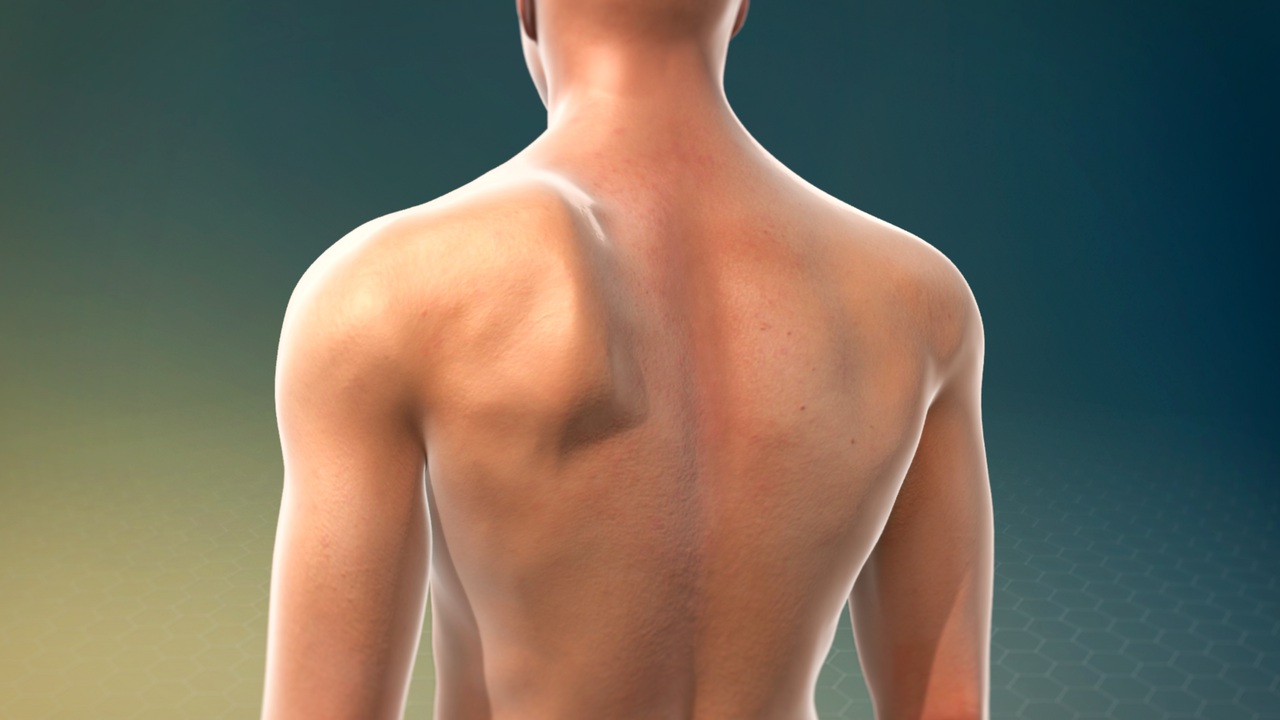The term ‘winging scapula’ is used when the muscles of the scapula (shoulder blade) are weak, resulting in decreased stability or an inability to keep the borders of the scapula down against the ribcage. As a result, the inner or outer borders of the shoulder blade protrudes from the back, like wings.
The muscles that attach to the scapula, both stabilise the arm to the body and move the arm around. If any of the muscles are not working in the right way at the right time, this leads to a break down in the rhythmic motion of the shoulder blade and can lead to apparent winging. Normally when we elevate our arms, about two thirds of the movement occurs at the glenohumeral joint (shoulder joint). The remaining one third is from our scapula gliding on our thorax. Therefore, the movement of the scapula is crucial to how well we can move and use our arms.
Loss of this ‘scapulohumeral rhythm’, can lead to loss of range of motion into flexion and abduction (movement forward and outward) of the upper extremity.
Winging may be caused by injury or dysfunction of the muscles themselves or the nerves that supply the muscles.
The main causes of Scapula winging are:
Loss of Serratus anterior muscle function
Loss of Trapezius muscle function
Loss of the scapular suspensory mechanism
Winging secondary to instability
Winging secondary to pain
Nerve injury
In this blog we’ll concentrate on Serratus Anterior muscle dysfunction.
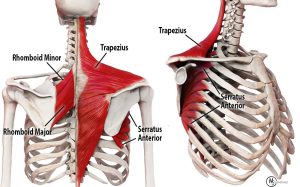
Weakness of the Serratus Anterior muscles are the main cause of scapula winging. When the Serratus Anterior muscles are weak, the medial (inner) portion of the scapula protrudes from the back as they are not well anchored against the ribcage.
The action of the Serratus Anterior is to protract your shoulder blades. This means they draw the shoulder blades away from each other around towards the front of your ribcage.
The Serratus Anterior muscles are also responsible for upward rotation of your shoulder blades. This allows you to lift your arms above shoulder height. If your Serratus Anterior muscles are not firing correctly or are weak, your body will use trick movements to lift your arm high, usually by shrugging your shoulders. This possibly leads to overloaded sore neck muscles.
Therefore, the Serratus Anterior muscles are major contributors to having good posture and avoiding neck pain. They anchor and stabilize your shoulder blade as well as allow fluid and efficient movement of the shoulders, decreasing the impact and use of your neck.
Your physiotherapist can perform tests to determine whether your winging scapula is caused by muscle weakness/ dysfunction.
The following 5 exercises can then help develop more strength in the Serratus Anterior muscles:
1. Serratus Anterior punches
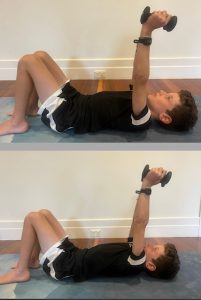
Lie down on a bed with your back flat. Hold a weight in one or both hands and lift your arm(s) up towards the ceiling. From here, punch straight up in the air, then let your shoulder relax down as far as you can making sure you keep your arm straight. Imagine your arm bone sinking into the shoulder socket.
Repetitions: 3 x 10-15
2. 4-Point kneeling scapula protraction/ retraction
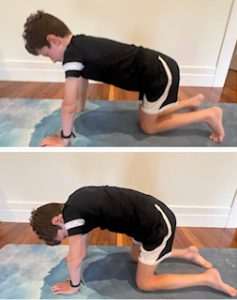
Get onto all fours and ensure that your knees are directly under your hips, your hands are directly under your shoulders. Ensure that your elbows remain straight as you lower your torso towards the ground, pinching your shoulder blades together (you will only move a few centimeters). Push back against the floor so your shoulders move forward and shoulder blades begin to separate. Imagine your shoulder blades curving around your rib cage and coming back again.
Repetitions: 3 x 10-15
3. Mini Wall Push-ups with scapula protraction/ retraction
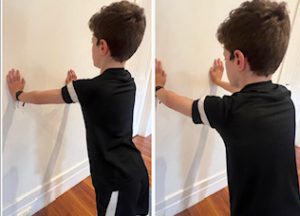
Stand in front of a wall with a slight lean and your arms outstretched on a wall with your palms flat. Hold your arms still and move your body forwards in a straight line so that your shoulder feels like it is being pushed backwards, ensuring you keep your elbow straight. Then push back off the wall so that your shoulders move forwards again. Imagine your shoulder blade curving around your rib cage and coming back again.
Repetitions: 3 x 10-15
4. Theraband Hugs

Standing straight, hold onto a theraband at each end and wrap around the middle of your shoulder blades. Raise your arms directly out to your side at a 90 degree angle. Keeping your arm as straight as possible pull the band forward and inwards as if you were giving someone a hug. Once your hands meet hold in the position for 5 seconds before returning to the starting position. Try to avoid shrugging through your shoulders during this exercise.
Repetitions: 3 x 10-15
5. Split stance punches with band
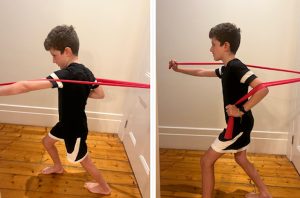
Stand facing away from the theraband (or cable machine) in a split stance position with the opposite leg to the working arm forward. Ensure that you stabilize through your core as you push out in a punch-like manner against the resistance of the theraband. Ensure there is minimal twisting of the torso. Return to the starting position and continue with the same arm. Swap stance legs and complete with the other arm
Repetitions: 3 x 8-12 each arm
Try completing these exercises daily for optimal results. With consistency and time, as your Serratus Anterior muscles get stronger, you should notice less Scapula Winging.
Sheree
For other Blog posts related to neck/ Thoracic and shoulder strengthening have a read below:

